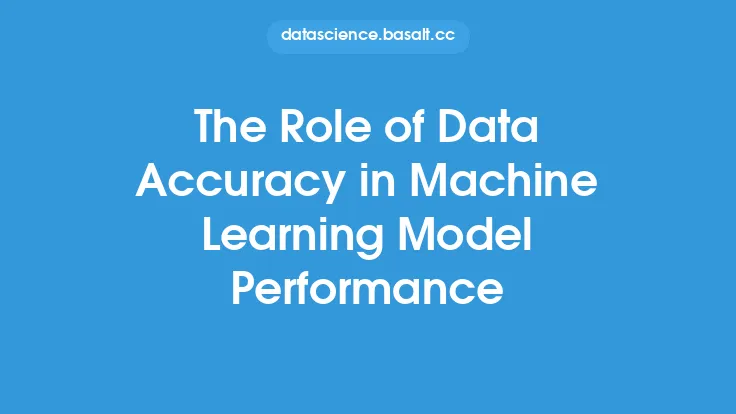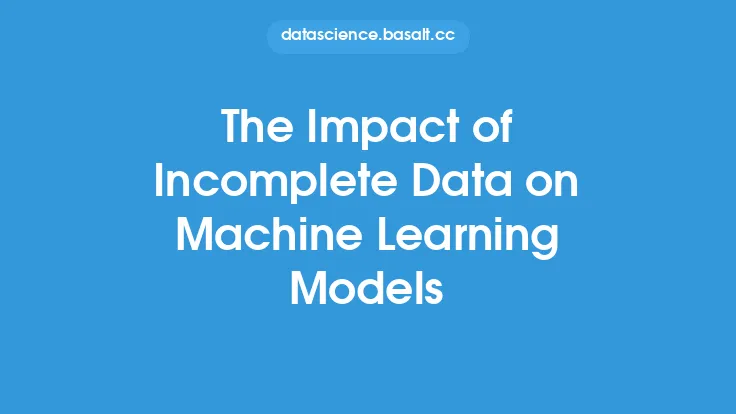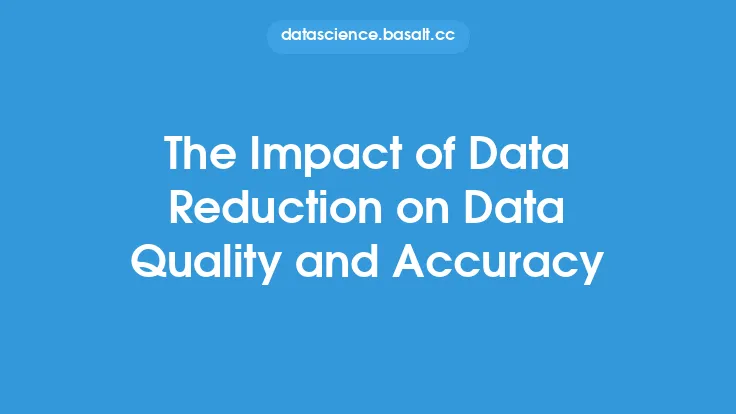Data preprocessing is a crucial step in the data mining process, as it directly affects the performance of machine learning models. The quality of the data used to train a model has a significant impact on its ability to make accurate predictions or classifications. In this article, we will delve into the impact of data preprocessing on model performance, exploring the various techniques and methods used to prepare data for modeling.
Introduction to Data Preprocessing Techniques
Data preprocessing involves a series of steps that transform raw data into a format suitable for modeling. This includes handling missing values, removing duplicates, encoding categorical variables, and scaling numerical features. The goal of data preprocessing is to create a dataset that is consistent, accurate, and relevant to the problem being solved. Various techniques are used to achieve this goal, including data cleaning, feature engineering, and data transformation. Each technique plays a critical role in preparing the data for modeling, and the choice of technique depends on the nature of the data and the requirements of the model.
The Effect of Data Preprocessing on Model Performance
The performance of a machine learning model is heavily influenced by the quality of the data used to train it. Poorly preprocessed data can lead to biased models, overfitting, or underfitting, resulting in suboptimal performance. On the other hand, well-preprocessed data can significantly improve model performance, enabling the model to generalize better to new, unseen data. The impact of data preprocessing on model performance can be seen in several areas, including improved accuracy, increased robustness, and enhanced interpretability. By removing noise and inconsistencies from the data, preprocessing helps to reduce the risk of overfitting and improves the model's ability to capture underlying patterns and relationships.
Data Transformation and Feature Engineering
Data transformation and feature engineering are critical components of data preprocessing. These techniques involve transforming existing features into new ones that are more relevant to the problem being solved. Feature engineering can include techniques such as polynomial transformations, log transformations, and feature scaling. Data transformation, on the other hand, involves converting data from one format to another, such as converting categorical variables into numerical variables. The goal of these techniques is to create a set of features that are informative, relevant, and useful for modeling. By applying these techniques, data scientists can improve the performance of their models, reduce the risk of overfitting, and enhance the interpretability of the results.
Handling Imbalanced Datasets
Imbalanced datasets, where one class has a significantly larger number of instances than others, can pose a significant challenge to machine learning models. If left unaddressed, imbalanced datasets can lead to biased models that perform well on the majority class but poorly on the minority class. Data preprocessing techniques, such as oversampling the minority class, undersampling the majority class, or generating synthetic samples, can help to address this issue. These techniques can improve the performance of the model on the minority class, reduce the risk of bias, and enhance the overall accuracy of the model.
The Role of Dimensionality Reduction
Dimensionality reduction is a data preprocessing technique used to reduce the number of features in a dataset. This technique is essential when dealing with high-dimensional data, where the number of features is large compared to the number of samples. Dimensionality reduction techniques, such as principal component analysis (PCA) and t-distributed Stochastic Neighbor Embedding (t-SNE), can help to reduce the risk of overfitting, improve model performance, and enhance the interpretability of the results. By reducing the number of features, data scientists can simplify the model, reduce the risk of noise and irrelevant features, and improve the model's ability to generalize to new data.
Evaluating the Effectiveness of Data Preprocessing
Evaluating the effectiveness of data preprocessing is critical to ensuring that the techniques used are improving model performance. This can be done using various metrics, such as accuracy, precision, recall, and F1 score. Data scientists can also use techniques such as cross-validation to evaluate the performance of the model on unseen data. By evaluating the effectiveness of data preprocessing, data scientists can identify areas for improvement, refine their techniques, and optimize the performance of their models.
Best Practices for Data Preprocessing
To ensure that data preprocessing is effective, data scientists should follow best practices, such as exploring and understanding the data, handling missing values and outliers, and using techniques such as data normalization and feature scaling. Data scientists should also consider the requirements of the model and the problem being solved when selecting data preprocessing techniques. By following these best practices, data scientists can improve the quality of their data, enhance model performance, and reduce the risk of errors and biases.
Conclusion
Data preprocessing is a critical step in the data mining process, and its impact on model performance cannot be overstated. By applying various data preprocessing techniques, data scientists can improve the quality of their data, reduce the risk of errors and biases, and enhance model performance. The choice of technique depends on the nature of the data and the requirements of the model, and data scientists should carefully evaluate the effectiveness of their techniques to ensure optimal results. By prioritizing data preprocessing and following best practices, data scientists can unlock the full potential of their data and build models that are accurate, robust, and reliable.





